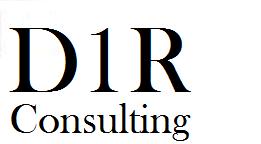American Viticultural Areas
- Details
- Published: Friday, 18 October 2013 01:08
- Written by David DeCiero
AVA’s are not the newest award show that you don’t care about. It’s the American version of the AOC from France. The question is, does it mean anything for you? Is it something to impress your friends, or just useless knowledge which may also serve to impress your friends? Either way, let’s learn about it so you can at least have some idea what it means when someone brings it up.
AVA stands for American Viticultural Area and is administered by that awesome government agency called the Alcohol Trade and Tax Bureau. This is one of the best government agencies because their acronym is TTB. I don’t know how they lost the alcohol in their acronym, but they did it. (Maybe they didn’t want to be confused with the telephone company?) This agency is responsible for the federal oversight of alcohol excise taxes and many aspects of the wine trade, presumably due to interstate commerce. The AVA’s are a geographical delimiter, so, it indicates nothing about the actual quality of the wine, but rather where it was grown. This is very similar to the Appelation Origine Controlle system in France, which has the same idea about location. The concept being that the terroir dictates the wine, so if you can control from where the grapes came, then the resulting wine must have some level of quality.
First, how do AVA’s get created? Since you are dealing with government, it starts with what else, a form. All you have to do is submit an application with a set of defined geographical boundaries and a set of reasons as to why it should be an AVA. Doesn’t sound too difficult, does it? The problem is that it isn’t. The above process has resulted in 207 different AVA’s. There are currently 11 AVA’s with paperwork pending. There is even an AVA for an island off of Massachusetts. Guess how many wineries there are on that island. (how many xxxxxxx). The problem is that each AVA is not exclusive. That is, one can overlap another, and some AVA’s are subclassifications of another AVA. So, North Coast AVA in California has 46 subclassification and to top it off, the Los Carneros AVA is in four different defined areas (Napa Valley, North Coast, Sonoma Valley, Sonoma Coast). It is like the 4 corners of AVA.
The rules pertaining to AVA labeled wine is that at least 85% of the grapes have to come from that AVA. This means that 85% of the grapes have to be grown in the geographical boundaries defined by the AVA that end up in the resultant wine. Additionally, the wine has to be vinified within a certain distance from the original AVA. So, you can’t have Los Carneros grapes shipped to Michigan and still label it as Los Carneros AVA. Of course, there is a caveat. If it is a statewide AVA, it can be vinified in a neighboring state and still be labeled as the original AVA. The inevitable question is; How does the TTB police the use of the AVA? Well, the TTB also approves every single wine label in the United States. So, if you decide to use an AVA on your label, they are going to check it out. Since they also run all of the federal excise taxes, they can pretty much figure out from where you are getting your grapes. Now that your head is spinning (not in a good way), let’s get away from the legal nonsense and figure out how to use this AVA knowledge.
So, how does the AVA system help us? A good rule of thumb to find good AVA regions is to look for concentrations. That is, look for a cluster of appellations within a small area, or multiple subdesignations. This will mean that there is a lot of winemaking activity in that area and wineries are trying to distinguish each particular area. One of the best examples is North Coast and Napa Valley in California. As noted before, there are 46 subclassifications within North Coast alone. Obviously, there is a lot of vinification happening here. This pressure usually means it’s a good place to make wine. Other areas that display this clustering are New York, Washington, and Oregon. New York may not be known as a winemaking hotbed, but you see eight AVA’s within the state. These regions are clustered around the Finger Lakes (three) and Long Island (three). See if you can find these wines in a wine store (Riesling in the Finger Lakes and Merlot or Cabernet Franc from Long Island), and try them to branch out a little bit. Oregon and Washington are a bit better known, and they have a few more designations than New York. Contrast these clusterings with the Ohio River Valley AVA. This AVA covers the portions of the four states of Indiana, Kentucky, Ohio, and West Virginia. This generally means that the climate for growing quality wines is not great, which has led only a few wineries to open. Since great wine is made in the vineyard, you’re less likely to find good wine from these areas.
Another reason to utilize the AVA system is that it does group together a set of wines. The idea is not to learn every single region, but to identify the ones that you like. This may not be too helpful in the California AVA, as it is so large, but smaller AVA’s will give a tighter range of wines. So, if you like Los Carneros AVA Merlot, looking for wines with that designation on the label will help. Also, winemakers tend to make a particular style within a particular region, so chances are the winemaking style will be the same as well as the grape growing conditions. AVA’s have some disadvantages in their complexity, but they provide a good guideline to making your wine purchase decisions.

